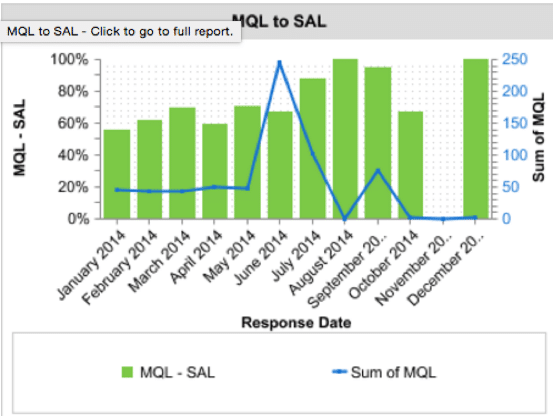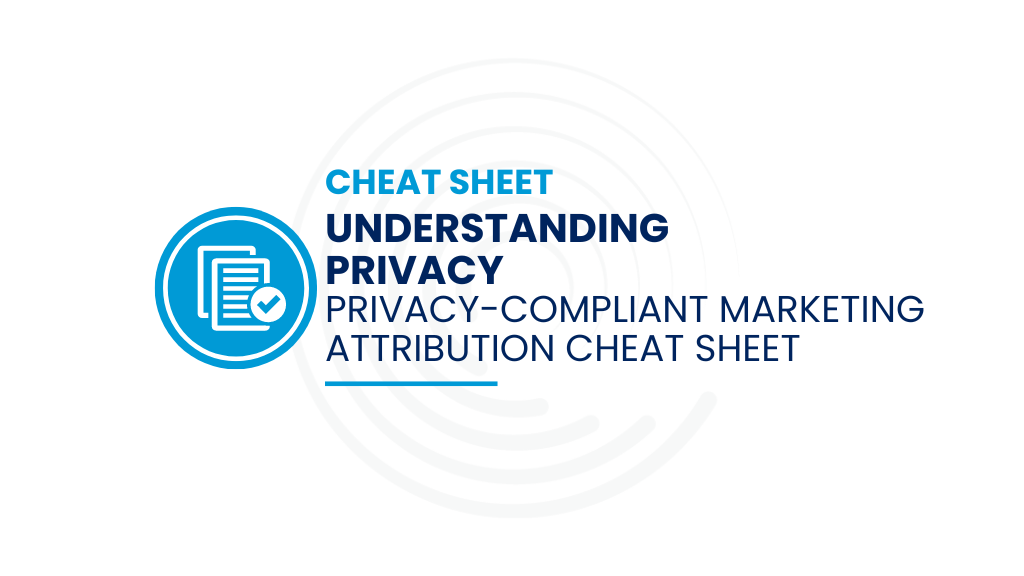As a sales rep at Full Circle Insights, I encounter many businesses with sales organizations that aren’t using Salesforce correctly, skipping certain essential steps or considering it unnecessary altogether. This often backfires and ultimately makes marketers’ lives hell as they try to get the insights they need out of Salesforce.
I’d like to highlight the top three challenges I’ve seen in Salesforce workflows and how marketers have built a case for sales reps to change their process in order to maximize their selling effectiveness and efficiency.
Challenge #1 – Getting Sales Reps to Change Lead Status
In today’s B2B sales world, external tools like InsideSales or Toutapp are becoming more and more popular among sales reps. What I’ve often encountered is that tracking Lead status changes (or Contact statuses, read on for that) is seen as a hassle by reps and considered unnecessary.
Why is this important?
Changing Lead statuses gives marketers crucial visibility into the top of the funnel at the Lead level, not just the Opportunity level. To understand why this kind of funnel visibility is essential for marketers, check out our CEO Bonnie Crater’s blog post.
How to build the case for sales to actually change their process?
There’s no doubt that getting visibility into the top of the funnel is essential for marketers, but how do we actually convince sales to make these process changes? Sales reps first and foremost care about efficiency. The more opportunities they have to sell the better, so the best way to convince them to change the process is by sourcing better quality leads. If we get higher-level visibility into metrics at key funnel points, like the marketing-to-sales handoff, we can then understand and improve the quality of the leads we’re sourcing. The better the quality, the less time reps have to waste reaching out to unqualified prospects. Check out this dashboard component below.

Take a look at the month of June, when we supplied our sales team with a higher volume of MQLs (blue line). We can see our sales team still managed to convert a relatively standard 70% of those Leads into Opportunities. If, however, our conversion rate (green bar) had dropped, we could start to get more scientific with our marketing team’s efforts (“Is this because of a case of poor messaging? Not enough SDRs? More sales enablement resources?”) to get those conversion rates back up. The better the quality of our marketing Leads, the happier sales reps will be. And at the end of the day, this increase in Lead quality is made possible by our sales reps changing and updating Lead statuses.
Potential workarounds to prevent sales workflow changes?
A workaround would require using custom code on the backend to create a workflow where an activity triggers a change in Lead status.
Challenge #2 – Linking Contacts to Opportunities
Since there are numerous different ways to create Opportunities in Salesforce, many businesses have problems with “stray” opportunities, meaning they have certain opportunities where they simply have no visibility as to where that Opportunity came from, or why it was created.
Why is this important?
This one is relatively straightforward. Marketers want to be able to associate revenue to Campaigns to be able to accurately assess campaign performance. If there is a lack visibility into which Campaigns are associated with an opportunity, then marketers can’t attribute revenue to those Campaigns when utilizing multi-touch attribution.
How to build a case for sales to actually change their process?
Again, this is pretty straightforward. If marketers can prove the dollar amounts associated with Campaigns, then they can understand which Campaigns to invest in to generate pipeline for the sales team.
Challenge #3 – Tracking Contact activity
In standard Salesforce, it’s impossible to report across the Lead and Contact sides of the database, making it extremely difficult to manage all of our Campaign responses. Although some responses are going to represent net new Leads, other responses are going to come from the existing Contacts in the database. So, in order to more effectively track all of campaign responses, we need to be able to report more holistically in a way that’s inclusive of both Leads and Contacts.
Why is this important?
We know that the nature of a B2B sales cycle contains iterative engagements where Leads or Contacts fall out of the funnel, and then somewhere down the road re-enter. If a sales rep converts a Lead to a Contact, and then the Contact gets nurtured, what happens when the Contact re-MQLs and comes back to the top of the funnel? Because there’s no way to manage all Campaign responses in one report, marketers end up spending countless dreadful hours putting together Excel spreadsheets.
How to build a case for sales reps to change their process?
The case here is going to be the same as the case I mentioned for changes in Lead statuses. If you add a Contact status, suddenly both Leads and Contacts can be worked with synonymously, allowing marketing to track the funnel on the Contact level as well. Keep in mind – even with the addition of Contact statuses, there’s still no way to report across Leads and Contacts to understand the entire funnel, so you’ll still be stuck exporting two separate reports into Excel spreadsheets and manually compiling the two.
Curious about other essential enhancements to Salesforce that help you get accurate marketing activity? Feel free to contact me, or fill out a demo request!




